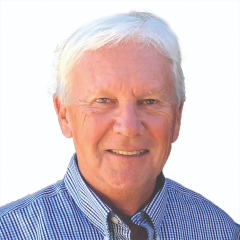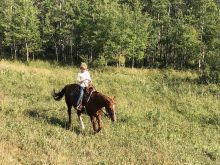Soil and water are the most important sustainable natural resources in Western Canada. Both are essential to produce food and sustain human life. We hear a lot about the dwindling quality and availability of freshwater supplies, but society does not recognize the importance of soil. We continue to lose more and more of our best agricultural lands to urban sprawl, rural residential developments, expanding rural industrial developments and the energy sector — but most people simply don’t care.
Alberta has a land area of almost 159 million acres but only 51 million acres are used for agriculture, of which 26 million acres are in native rangeland or tame pasture used for livestock production. This is mostly rated as Class 5 and 6 land. About 25 million acres are used for annual crop production. This is only 15.7 per cent of the total land area of Alberta, and none of it is Class 1 land. The best cultivated land in Alberta is Class 2, 3 and 4. Class 2 makes up less than four per cent of all land in Alberta. Alberta and Saskatchewan have no Class 1 land as defined by Agriculture Canada’s Land Suitability Rating System, which is based on soil type, climate and location.
Read Also

Claas brings 1000 Series SP forage harvesters to Canada
In mid-August, Claas unveiled its new line of Jaguar forage harvesters at an event in Visalia, California, deep in the heart of that state’s dairy region.
Saskatchewan has a land area of 146 million acres with 31 million acres used for annual crop production (21.2 per cent). Manitoba has a land area of 135.5 million acres with 10.4 million acres used for annual crop production (7.6 per cent). Most Canadians are under the perception that vast areas of the Prairie provinces are used for crop production. In fact, the land available and suitable is very small — only 15 per cent of the total 441 million acres.
Sprawling urban developments are constantly taking our best agricultural land out of production. For example, the city of Calgary occupies an area of almost 600 square km with a population of over 1.2 million people. In 2012, Calgary grew by 35,000 people or 3.2 per cent. At a continued population growth rate of three per cent annually, Calgary could have 3.6 million people in 2050 and occupy a land area of 1,800 square km. Almost all the best agricultural land in southern Alberta is adjacent to Calgary. Much of this land could be lost from production in the next 40 years if present growth trends continue.
The oil and gas sector also threatens agricultural land. There are about 120,000 abandoned well sites on agricultural land in Alberta that need to be reclaimed. Saskatchewan has a similar problem. Reclamation procedures can greatly improve crop production potential, however, the soil cannot be returned to its original state. There is an estimated 110,000 km of pipelines crossing farmland in Alberta. In many cases, crop production on the disturbed pipeline right of way areas is only 60 to 80 per cent of pre-pipeline production. The land is still available for cropping after pipeline installation but crop production is often reduced as a result of the significant soil disturbances.
As our best agricultural lands are removed from production, there are limited opportunities to develop new lands for production. Lands that could potentially be developed are in the northern agricultural fringe areas. These lands are mostly Class 4 or lower and have moderate to severe crop production limitations.
Preserving agricultural land is critical for food production. As non-renewable energy resources are depleted, future generations will also need crops for bio-energy. Soil is essential for sustaining life and the loss of our soil resources must be kept in check.
















